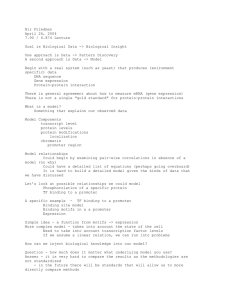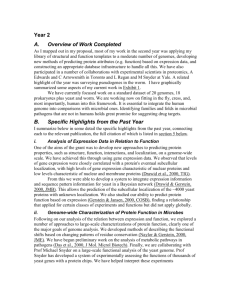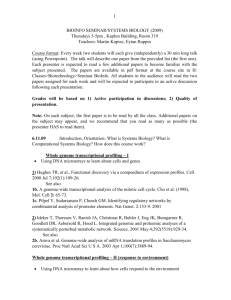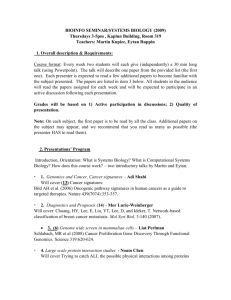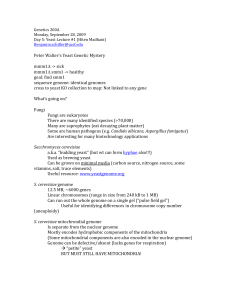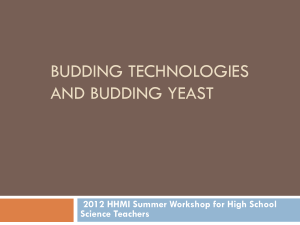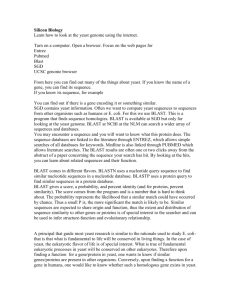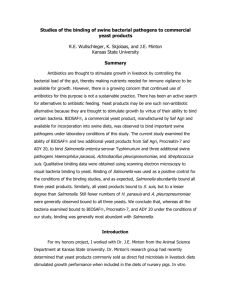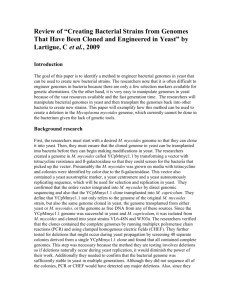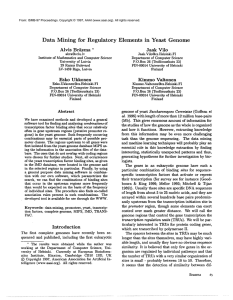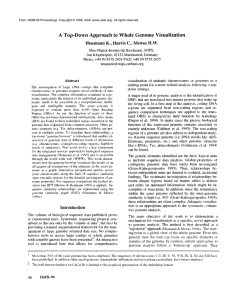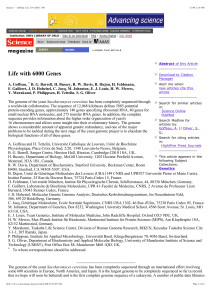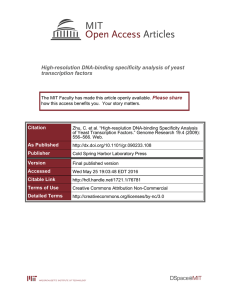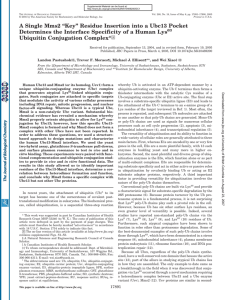Seminar in Computational Biology Research
advertisement
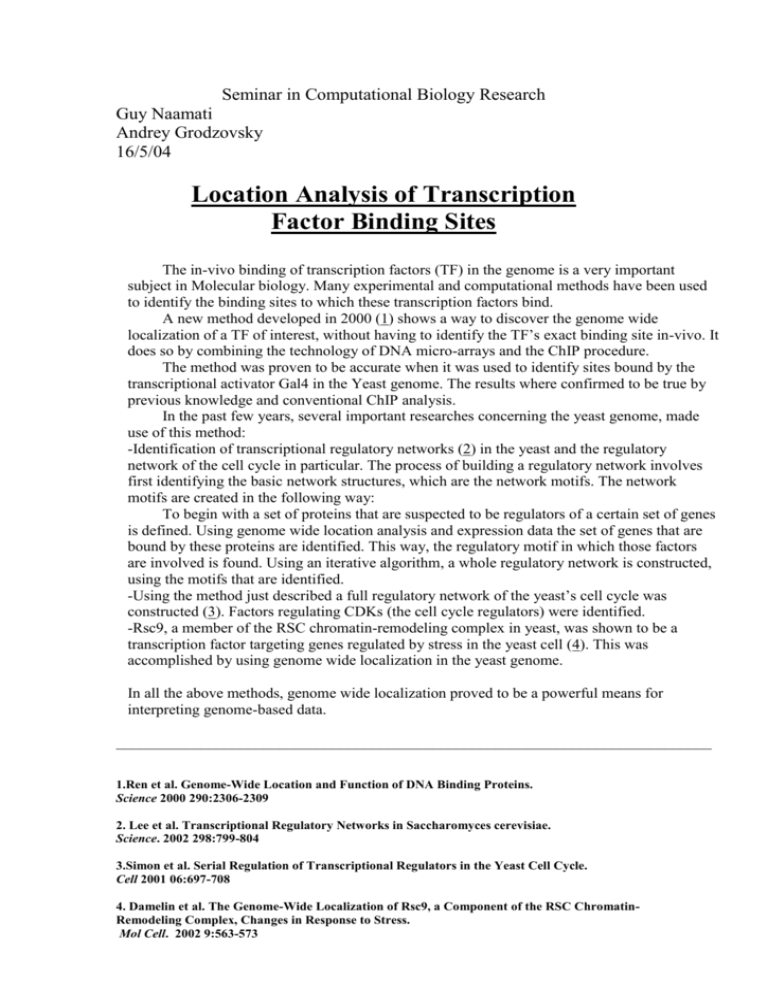
Seminar in Computational Biology Research Guy Naamati Andrey Grodzovsky 16/5/04 Location Analysis of Transcription Factor Binding Sites The in-vivo binding of transcription factors (TF) in the genome is a very important subject in Molecular biology. Many experimental and computational methods have been used to identify the binding sites to which these transcription factors bind. A new method developed in 2000 (1) shows a way to discover the genome wide localization of a TF of interest, without having to identify the TF’s exact binding site in-vivo. It does so by combining the technology of DNA micro-arrays and the ChIP procedure. The method was proven to be accurate when it was used to identify sites bound by the transcriptional activator Gal4 in the Yeast genome. The results where confirmed to be true by previous knowledge and conventional ChIP analysis. In the past few years, several important researches concerning the yeast genome, made use of this method: -Identification of transcriptional regulatory networks (2) in the yeast and the regulatory network of the cell cycle in particular. The process of building a regulatory network involves first identifying the basic network structures, which are the network motifs. The network motifs are created in the following way: To begin with a set of proteins that are suspected to be regulators of a certain set of genes is defined. Using genome wide location analysis and expression data the set of genes that are bound by these proteins are identified. This way, the regulatory motif in which those factors are involved is found. Using an iterative algorithm, a whole regulatory network is constructed, using the motifs that are identified. -Using the method just described a full regulatory network of the yeast’s cell cycle was constructed (3). Factors regulating CDKs (the cell cycle regulators) were identified. -Rsc9, a member of the RSC chromatin-remodeling complex in yeast, was shown to be a transcription factor targeting genes regulated by stress in the yeast cell (4). This was accomplished by using genome wide localization in the yeast genome. In all the above methods, genome wide localization proved to be a powerful means for interpreting genome-based data. _____________________________________________________________________________ -Remodeling 1.Ren et al. Genome-Wide Location and Function of DNA Binding Proteins. Science 2000 290:2306-2309 2. Lee et al. Transcriptional Regulatory Networks in Saccharomyces cerevisiae. Science. 2002 298:799-804 3.Simon et al. Serial Regulation of Transcriptional Regulators in the Yeast Cell Cycle. Cell 2001 06:697-708 4. Damelin et al. The Genome-Wide Localization of Rsc9, a Component of the RSC ChromatinRemodeling Complex, Changes in Response to Stress. Mol Cell. 2002 9:563-573



